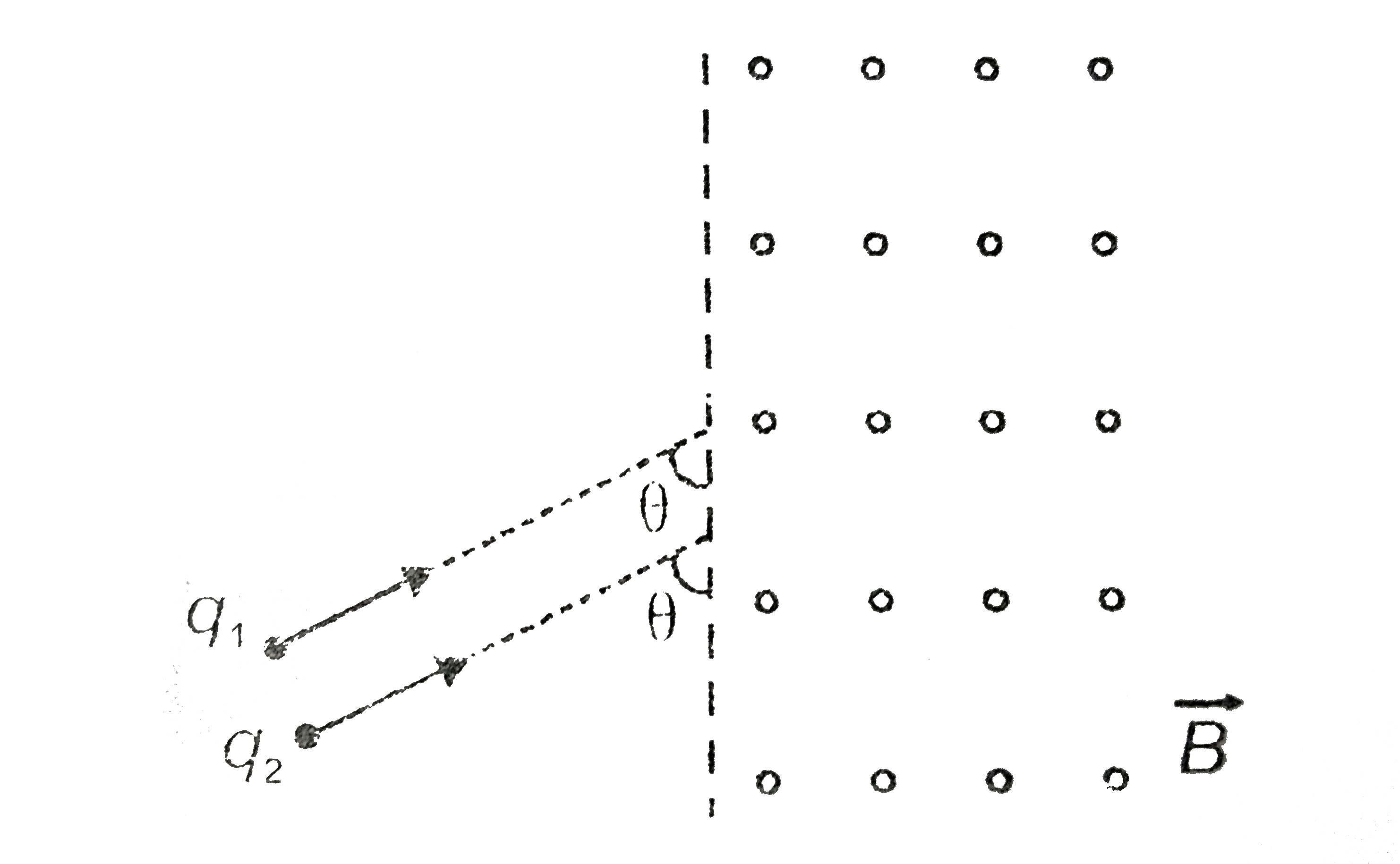Two charged particles have charges and masses in the ration 2:3 and 1:4 respectively. If they enter a uniform magnetic field and move with the same velocity. Then the ratio of their respective time periods of revolution is Solution in Tamil
a) 3:8
b) 1:4
c) 3:5
d) 1:6
Step by step video & image solution for Two charged particles have charges and masses in the ration 2:3 and 1:4 respectively. If they enter a uniform magnetic field and move with the same velocity. Then the ratio of their respective time periods of revolution is by Physics experts to help you in doubts & scoring excellent marks in Class 12 exams.
Updated on:21/07/2023Topper's Solved these Questions
- MOVING CHARGES AND MAGNETISMBOOK - NEW JOYTHI PUBLICATIONCHAPTER - MOVING CHARGES AND MAGNETISMEXERCISE - PREVIOUS YEAR QUESTIONS
1 Video
- MAGNETISM AND MATTERBOOK - NEW JOYTHI PUBLICATIONCHAPTER - MAGNETISM AND MATTEREXERCISE - COMPETITIVE EXAM CORNER
13 Videos
- NUCLEIBOOK - NEW JOYTHI PUBLICATIONCHAPTER - NUCLEIEXERCISE - COMPETITIVE EXAM CORNER
23 Videos
Similar Questions
The relation between magnetic field and current is given by Biot-Savart law.
a. Illustrate Biot-Savart law with necessary figure.
b. Compare Biot-Savart law with Coloumb's law for electrostatic field.
c. Give an expression for magnetic field on the axis of a circular current loop.
View SolutionChoose the correct statement .
View SolutionRadioactive 6027Co is transformed into stable 6028Ni by emitting two γ - rays of energies
View SolutionStatement 1: If a proton and an alpha -particle enter a uniform magnetic field perpendicularly with the same speed, the time period of revolution of alpha -particle is double than that of proton. Statement 2: In a magnetic field, the period of revolution of a charged particle is directly proportional to the mass of the particle and inversely proprotional to the charge of particle.
View SolutionAssertion : If a proton and an α-particle enter a uniform magnetic field perpendicularly, with the same speed, then the time period of revolution of the -particle is double than that of proton.
Reason : In a magnetic field, the time period of revolution of a charged particle is directly proportional to mass.
View SolutionTwo charged particles have charges and masses in the ratio 2:3 and 1:4 respectively. If they enter a uniform magnetic field and move with the same velocity then the ratio of their respective time periods of revolutions is
View SolutionTwo charged particles of charge +2q and +q have masses m and 2m respectively. Then are kept in uniform electric field allowed to move for the same time. Find the ratio of their kinetic energies.
View SolutionTwo charges q1andq2 having same magneitude of charge are moving parallel to each other and they enter into a region of uniform magnetic field as shown. If they have same mass and the time spent by them in the magnetic field are t1andt2 respectively, then

View SolutionTwo charged particle M and N are projected with same velocity in a uniform magnetic field. Then M and N respectively.
View SolutionTwo particle X and Y having equal charge, after being accelerated through the same potential difference enter a region of uniform magnetic field and describe circular paths of radii R1andR2 respectively. The ratio of the mass of X to that of Y is
View SolutionA charged particle enters into a magnetic field with velocity vector making an angle of 30∘ with respect of the direction of magnetic field. The path of the particle is
View SolutionAssertion (A) : If a proton and an alpha particle enter a uniform magnetic field normally with the same velocity, the time period of revolution of the alpha particle is double than that of proton.
Reason (R) : In a magneitc field the time period of revolution of a charged particle is directly proportional to its mass.
View SolutionTwo charged particles of charge -2q and +q have masses m and 2m respectively. They are kept in uniform electric field and allowed to move for the same time, find the ratio of their kinetic energies.
View SolutionA particle of mass 'm' and carrying a charge q enters with a velocity 'v' perpendicular to a uniform magnetic field. The time period of rotation of the particle
View SolutionTwo charged particles have charges and masses in the ratio 2:3 and 1:4 respectively. If they enter a uniform magnetic field and move with the same velocity then the ratio of their respective time periods of revolutions is
View Solution
